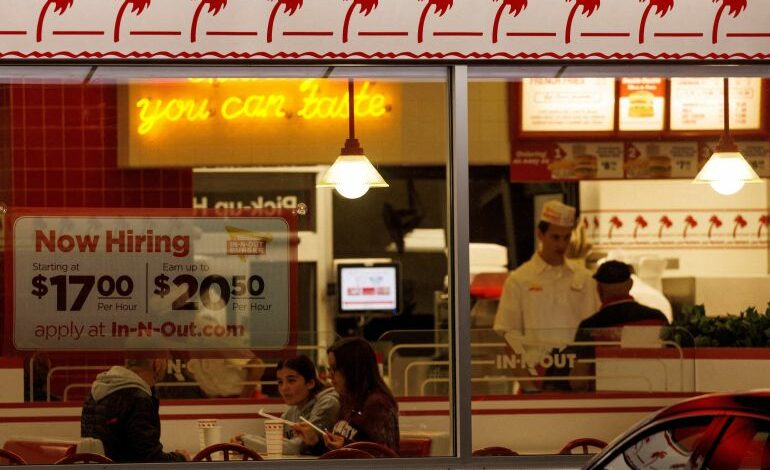US job growth strong in March, unemployment falls to 3.5 percent

The US economy continued to churn out jobs at a brisk pace in March, pushing the unemployment rate down to 3.5 percent, signs of persistent labour market tightness that could see the Federal Reserve hiking interest rates again next month.
Nonfarm payrolls increased by 236,000 jobs last month, the Department of Labor said in its closely watched employment report on Friday. Data for February was revised higher to show 326,000 jobs were added instead of 311,000 as previously reported.Some of the slowdown in hiring reflected the fading boost from the unseasonably mild weather in January and February.
Economists polled by Reuters had forecast payrolls rising 239,000. Estimates ranged from 150,000 to 342,000. The economy needs to create roughly 100,000 jobs per month to keep up with growth in the working-age population.As with most recent economic data, it was too early for financial market stress, triggered by the failure of two regional banks in March, to show up in the employment report.
The unemployment rate fell to 3.5 percent from 3.6 percent in February. Average hourly earnings rose 0.3 percent in March after gaining 0.2 percent in February. That lowered the annual increase in wages to 4.2 percent from 4.6 percent in February, which was still too high to be consistent with the Fed’s 2 percent inflation target. Fed officials will now await inflation data later this month to gauge the effectiveness of their year-long monetary policy tightening campaign.Financial markets were leaning towards the US central bank increasing rates by another 25 basis points at the May 2-3 policy meeting, according to CME Group’s FedWatch tool.
The Fed last month raised its benchmark overnight interest rate by a quarter of a percentage point, but indicated it was on the verge of pausing further rate hikes in a nod to financial market stress. It has hiked its policy rate by 475 basis points since last March from the near-zero level to the current 4.75 percent-5.00 percent range.
But the labour market is losing its shine. The Department of Labor’s annual revisions to the weekly claims and continuing claims data published on Thursday showed significant upgrades to both series.
Surveys from the Institute for Supply Management this week offered a downbeat assessment of the labour market. Job openings fell below 10 million at the end of February for the first time in nearly two years, though there were 1.7 job openings for every unemployed person that month, government data showed.
The labour market is expected to considerably loosen up starting in the second quarter as companies respond more to slowing demand caused by the higher borrowing costs.Credit conditions have also tightened, which could make it harder for small businesses and households to access funding. Small businesses, like restaurants and bars, have been the main drivers of job growth since the recovery from the pandemic.
Some economists have predicted that payrolls will turn negative in the second half of the year, a development which they said would compel the Fed to start cutting rates to avoid plunging the economy into a deep recession. Fed Chair Jerome Powell has pushed against this assumption.
Economists who have forecast a rate cut this year argued that parts of the economy, like housing, are already in recession, while tighter lending standards adopted by banks mean credit is going to be more restricted in the economy.
They also noted that business sentiment was at recessionary levels, while consumer confidence remained lacklustre. (Reporting by Lucia Mutikani; Editing by Paul Simao and Chizu Nomiyama)










